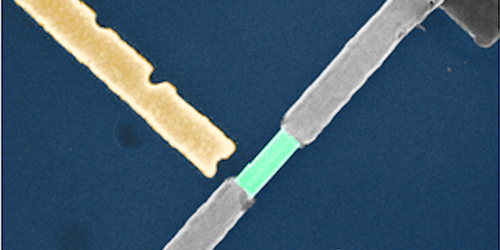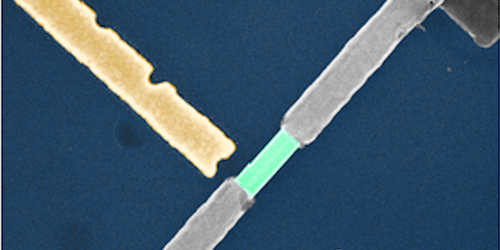Putting a Spin on the Josephson Effect
The Josephson “weak link”—a common element in quantum devices and sensitive magnetometers—consists of a nonsuperconducting material, such as a semiconducting nanowire, sandwiched between two superconductors. A supercurrent can flow through the wire, mediated by localized electronic states called Andreev bound states. Theory predicts that the energies of these states are influenced by the spins of the electrons and holes that give rise to these states. Now experiments by Leandro Tosi of the French Atomic Energy Commission (CEA) in Saclay, France, and his colleagues confirm these predictions. This spin degree of freedom could be used to manipulate the bound states for quantum computing applications.
The type of junction studied by Tosi and his colleagues consists of a semiconducting nanowire closing a superconducting ring of aluminum. Andreev bound states arise in the wire from a multiple-reflection process between the junction’s interfaces. When an electron traveling in the wire hits a superconducting contact, it reflects back into the wire as a hole. To conserve charge, two bound electrons—a Cooper pair—simultaneously pass into the superconductor. The reverse process occurs at the opposite end of the wire. The resulting states—made from electrons and holes reflecting back and forth in the nanowire—mediate supercurrent flow from one side to the other, a phenomenon known as the Josephson effect.
The team shows that the Andreev bound states in this system have two distinct spin states that differ in energy—so-called spin splitting. The team explained this energy difference as arising from two causes: the presence of more than one conduction channel in the wire and the coupling between the spin of the electrons and their motion.
This research is published in Physical Review X.
–Katherine Wright
Katherine Wright is a Senior Editor of Physics.





